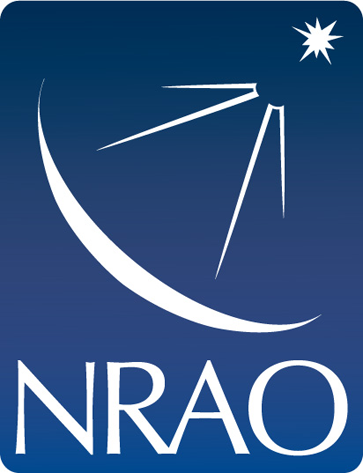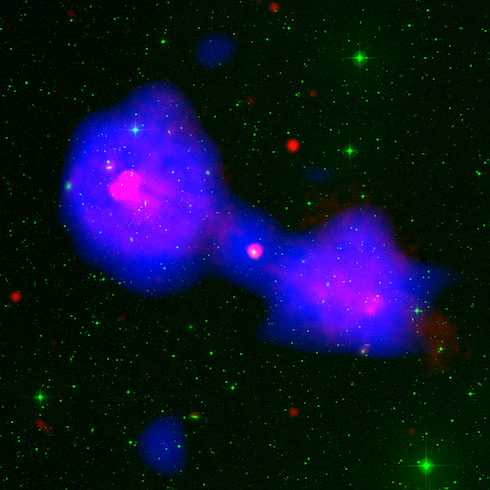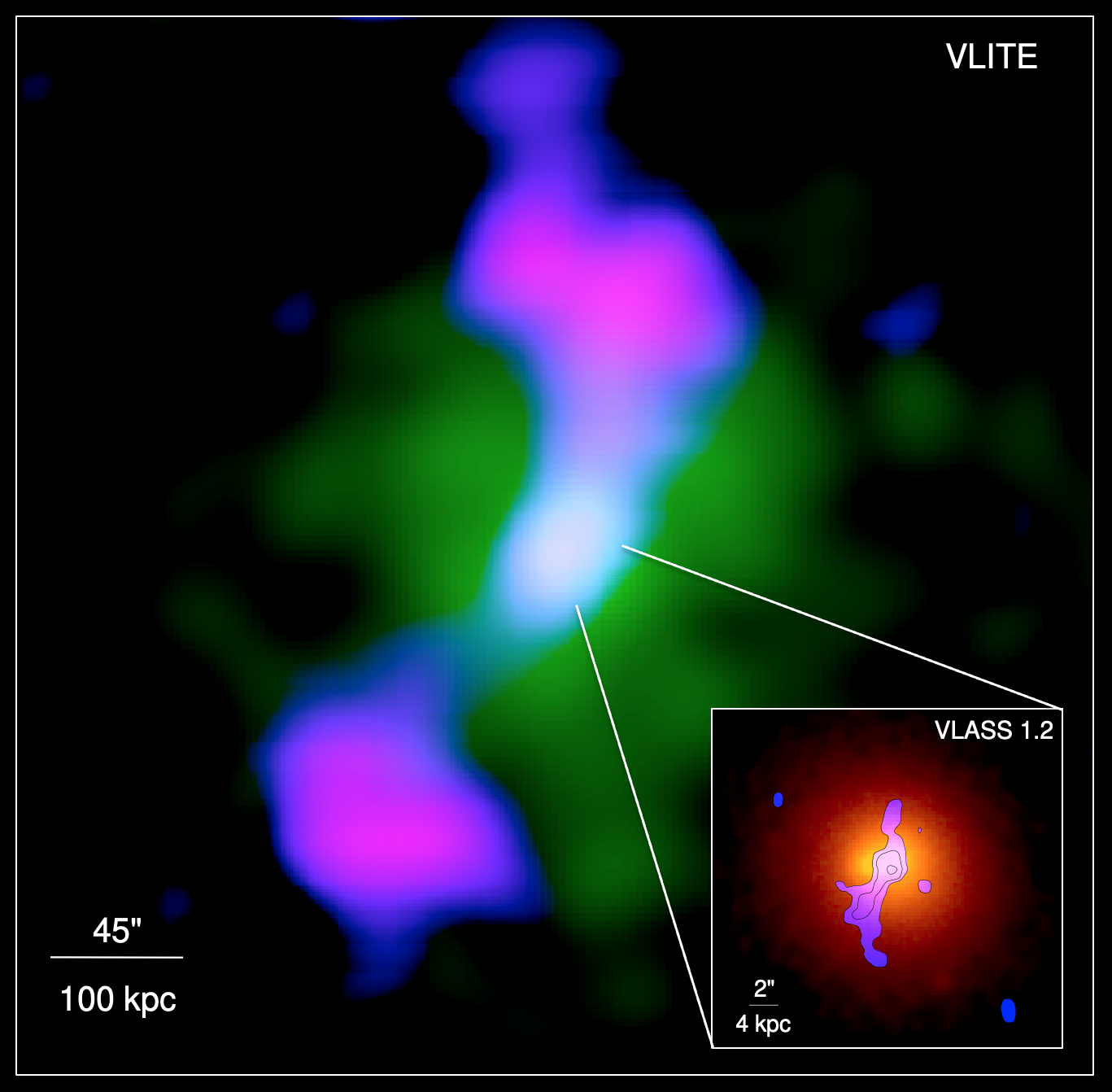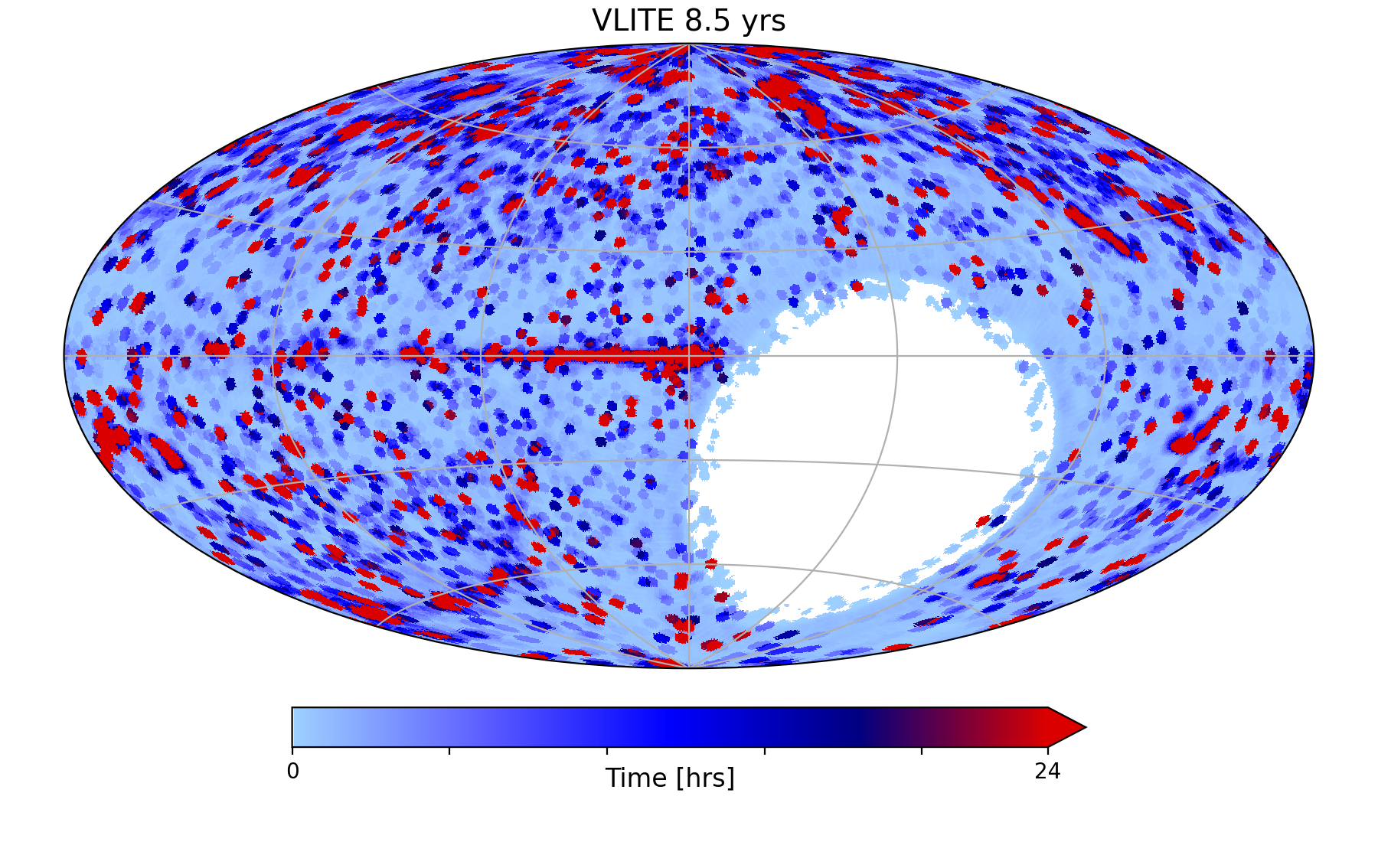
|
VLA Low-band Ionosphere and Transient Experiment (VLITE) |

|
VLITE is a commensal system capable of continuously accessing 64 MHz of bandwidth from the 236-492 MHz Low Band system deployed on the VLA.
The U.S. Naval Research Laboratory (NRL) and NRAO have collaborated to develop the VLA Low-band Ionosphere and Transient Experiment (VLITE). The VLITE backend includes dedicated samplers, fiber optics, and a DiFX-based real-time software correlator. VLITE operates on data from the VLA prime focus P band feeds, recording data between 320 and 384 MHz with 2 second sample time in parallel with all Cassegrain observations. VLITE records over 6000 hours of commensal data per year and operates during all VLA configurations. Data are archived, pipeline processed and cataloged at NRL.
VLITE first fringes were obtained on July 17, 2014. Science operations with VLITE commenced November 25, 2014. During the initial phase of operation, VLITE correlated 10 antennas and, in the first year of science operation, VLITE acquired over 6300 hours of data. By harvesting data from the VLA's prime focus, VLITE effectively makes the VLA "two telescopes in one". A 2015 NRL press release describes the instrument and shows sources in a galaxy cluster that were in the VLITE field-of-view from observations of an unrelated low redshift galaxy.
In 2016, VLITE's DiFX correlator was modified to allow data recording during on-the-fly (OTF) mapping to provide support to the Very Large Array Sky Survey (VLASS), which commenced in September 2017. Also in 2017, VLITE was expanded 16 VLA antennas, more than doubling the number of baselines. The on-going VLITE expansion was discussd in an NRL press release on radio mini-halos. VLITE's current operational mode runs with a total of 18 correlating antennas.
VLITE Data Products
VLITE data are processed using two separate pipelines:
- Astrophysics and
Transients pipeline:
- Features automated calibration and imaging of the data and operates with a 48-hour delay following data acquisition. Initial processing is concentrated on generating Stokes I images; however, all polarization products are correlated and stored. Future processing could include full polarization capabilities and a near real-time transient pipeline.
- Ionosphere pipeline:
- Features automated calibration of the data and operates in near real-time. The pipeline generates time series and corresponding fluctuation spectra to characterize Total Electron Content (TEC) gradient fluctuations.
VLITE Commensal Sky Survey (VCSS)
VCSS is an on-going multi-epoch survey observing the northern (Dec > -41.7 deg) sky three times between 2017 and 2024 using the VLA in its B-configuration. It is observed commensally with the 3GHz VLA Sky Survey (VLASS) The sky is divided into tiles which are observed by scanning in RA along lines of constant declination spaced by 7.2 deg (the half power radius of the VLA primary beam at 3 GHz). VLITE data are allowed to accumulate using a standard 2 second sampling as the antennas move through an angular distance of 1.5 deg or ~30-40 seconds of time. These data are then correlated and imaged using the midpoint of the motion as the phase center. The result is short "snapshots" with a smeared or elongated primary beam response. Overlapping snapshot images may in turn be combined into deeper "mosaic" images for additional sensitivity. Both snapshot and mosaic images are cataloged using PyBDSF and the resulting source information is stored in a SQL database.
VLITE records 1600 hrs of data during each survey epoch and produces ~160,000 snapshots. Snapshot images are 3.5 deg across with a typical sensitivity 7-10 mJy/beam that increases away from image center due to primary beam attenuation. The attenuation is about a factor of three at the edge of the field of view (FoV). The noise in the combined single-epoch mosaics is typically 3-5 mJy/beam. Snapshots in the first survey epoch are imaged with elliptical synthesized beams which vary across the sky, but have an average solid beam angle of ~15 arcsec. Snapshots in the second epoch are imaged uniform 20 arcsec round beams. The final sky footprint covered is ~32,000 square deg.
The movie below shows the accumulation of VCSS epochs 1 and 2 images from September 8, 2017 through February 21, 2022. Data are plotted on an Aitoff projection with the color showing the total on-sky time accumulated to the running date for the given area of sky.
As with regular VLITE, images and source catalogs are archived at the NRL and distributed to the community on request. Additionally, a HiPS version of the epoch 1 mosaic images is available here, and a shallow, bright source catalog is available through CIRADA here. More details of the CIRADA VCSS1 catalog are provided here.
Data Rights and Archiving
VLITE observations are recorded simultaneously with all VLA observing, with the following exceptions:
- All NRAO TAC-approved P-band observations
- Moving source observations (e.g. planets and the Sun)
Contact Information
If you are interested in learning more about VLITE including inquiries about collaborations, please contact us directly as follows:
- For general information concerning VLITE: Namir Kassim
- For astronomical imaging, source catalogs, and technical questions: VLITE Project Scientist Tracy Clarke
- For VCSS images, catalogs and questions: Wendy Peters
- For radio transients: Emil Polisensky
- For ionospheric science: Joseph Helmboldt
Acknowledgements
Basic research in radio astronomy at the U.S. Naval Research Laboratory is supported by 6.1 Base Funding. Construction and installation of VLITE was supported by the NRL Sustainment Restoration and Maintenance fund. The VLA is operated by the National Radio Astronomy Observatory (NRAO). Special thanks are due to Summer Drew (Oviedo HS, FL) for her contributions to this website. The image slider was made using Jssor.
Modified on Friday, 02-Jun-2023 11:45:29 MDT



